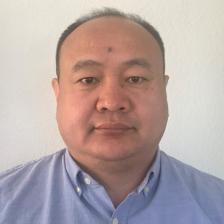
Mongolians Demand—and Receive—More Information About Their Natural Resources
I’d like to share a video clip about a Mongolian community that’s on its way to securing better governance of its mineral wealth. This clip is noteworthy because it gives outsiders a closer look at what kind of disaggregated information is required to benefit citizens impacted by extraction.
In April 2014, residents of Tsogttsetsii and Khanbogd soums (districts) gathered for a meeting on mining. These soums, located in a remote part of the Gobi desert, had been the setting for mining meetings before—but this one was different. It wasn’t organized by a mining company’s community engagement specialists, who frequently hold town halls. Nor was it organized by politicians from the capital campaigning for the next elections, or by national officials trying to engage with citizens in the remote and often forgotten provinces.
This new kind of meeting was organized by local elected bodies – citizens’ representative hurals – and was about community members, company representatives and local government officials coming together to discuss direct reporting by mining companies and local governments to local citizens. Community members at the meeting wanted to know what and how mining companies contribute to the local community, and how efficiently local governments make use of these contributions. Unlike meetings hosted by extractive companies or representatives of the central government, these meetings were more candid and brought to the forefront the need for greater disaggregated data on company social expenditures and infrastructure investments.
NRGI, the Open Society Forum and the Publish What You Pay Mongolia coalition worked with local stakeholders in Tsogttsetsii and Khanbogd for almost a year before this event. During this time representatives of extractive companies, subnational governments, and communities learned about the Extractive Industries Transparency Initiative. (Mongolia is currently EITI compliant.) They also learned to engage with each other and to understand and question the local impacts of extraction in the gold, copper and coal mining region using reporting templates and processes developed under EITI.
This video was broadcast in the aimag (province) by several local television and radio stations. Following the meeting and broadcast, Oyu Tolgoi (one of the biggest companies in Mongolia) published the EITI subnational report in its monthly information bulletin.
Dorjdari Namkhaijantsan is NRGI’s Mongolia Country Coordinator.
Authors

Dorjdari Namkhaijantsan
Mongolia Manager